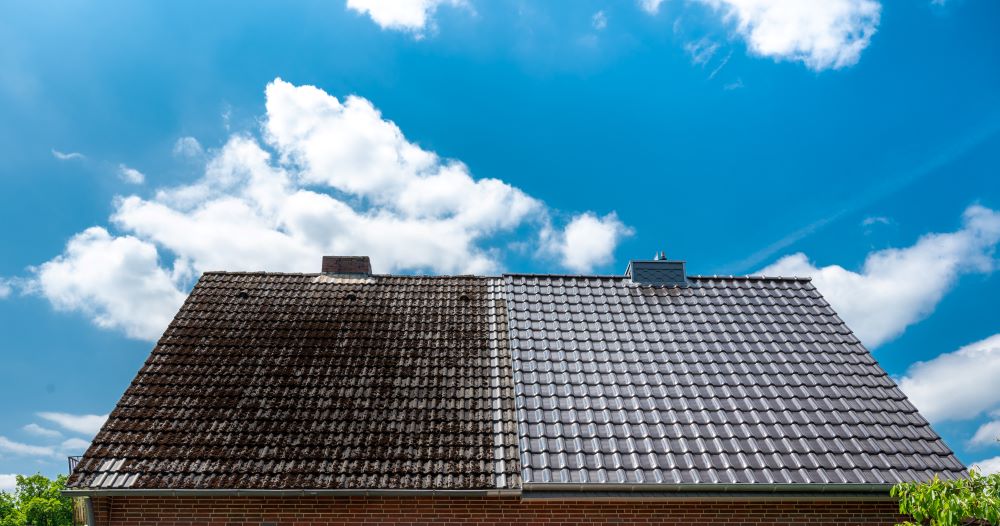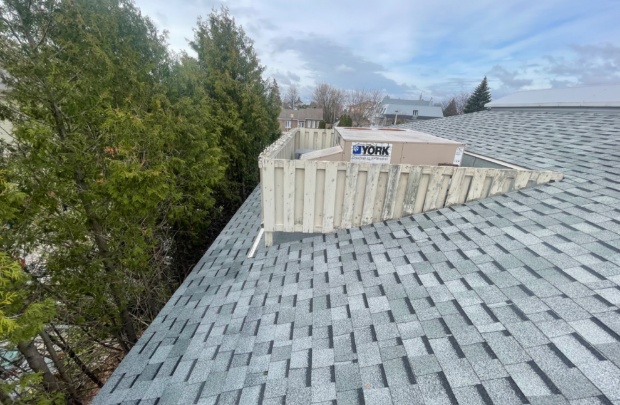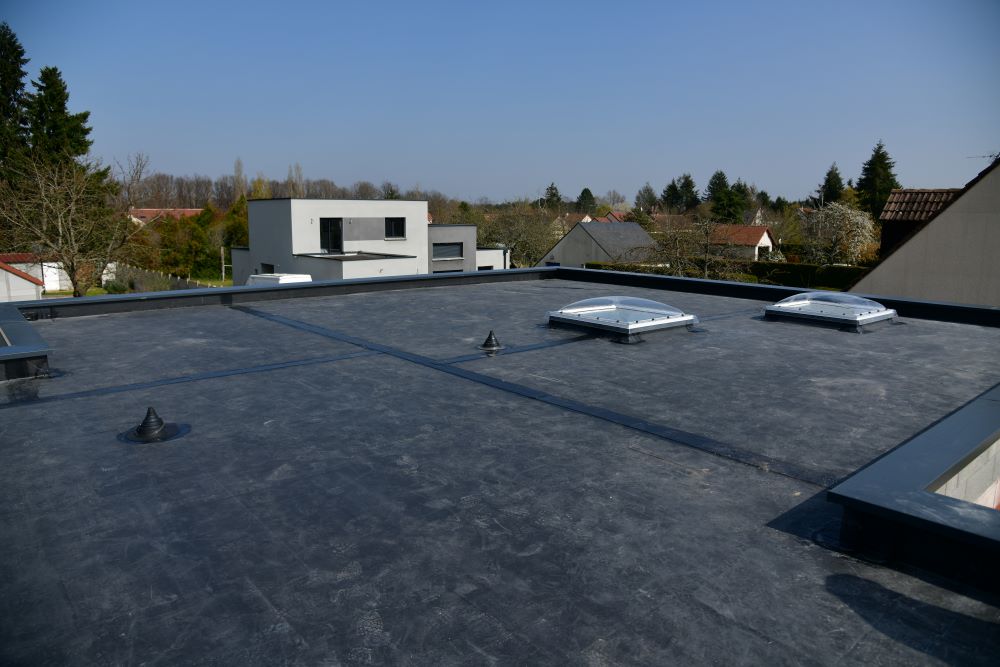Flat roofs are becoming an increasingly popular choice for commercial and residential buildings in Quebec, thanks to their sleek, modern appearance and practical functionality. Whether for reasons of energy efficiency, optimal use of space or to achieve a contemporary design, the construction of a flat roof offers many advantages.
Building a flat roof demands a thorough understanding of construction standards and regulations. Combined with careful planning, these measures guarantee that the structure will last and do its job in the local climate.
Our flat roof builders in Montreal present this guide explaining what is involved in flat roof installation in Quebec, with a focus on choosing the right materials and putting in place best practices for a successful project.
Choosing to install a flat roof
Appearance is not the only thing to consider when choosing a flat roof for a construction or renovation project in Quebec. In fact, there are a range of practical, environmental and design considerations that can significantly influence the efficiency and value of a property.
Modern design
Flat roofs are synonymous with modernity and minimalism. They create a clean skyline that blends harmoniously with an urban environment, one element of a contemporary architectural approach.
Efficient use of space
In contrast to pitched roofs, flat roofs offer the possibility of using your roof to create usable outdoor spaces such as roof decks or green roofs. The roof area can be used for relaxation, recreation or even urban vegetable gardens, adding living space to a building without taking up surrounding land.
A flat roof can be smooth and accessible, and can be used to install solar panels or rainwater harvesting systems. These additions help reduce a building’s ecological footprint and allow building owners to spend less on heating and cooling.
Durable and resistant to local climatic conditions
Modern building materials and techniques have greatly improved the strength and lifespan of flat roofs. This is especially important in the face of the extreme climatic conditions typical of Quebec, which include heavy precipitation, ice and snow, and wide variations in temperature.
With efficient drainage systems and simplified maintenance, flat roofs are designed to prevent water and snow accumulation, reducing the risk of infiltration and helping the roof and building last longer.
Flat roof installation standards and regulations
The construction of a flat roof, like any other construction or restoration project, must comply with a strict set of standards and rules, which were put in place to monitor and regulate the safety, sustainability and energy efficiency of local buildings.
Régie du Bâtiment du Québec (RBQ)
The RBQ oversees the construction quality and safety of buildings in Quebec. It outlines strict standards for all aspects of flat roof construction, with a focus on structural safety, waterproofing and insulation.
If you are planning to complete a construction project in Quebec, you need to follow the RBQ’s guidelines. This includes using approved materials and construction techniques and upholding established standards for insulation and ventilation.
Importance of municipal approval
Before starting a flat roof construction project for a residential or commercial building, you must obtain a building permit from your municipality.
A permit confirms that your project meets not only provincial and national standards, but also specific local regulations. These may include restrictions related to building height and appearance and the appropriate use of outdoor spaces.
Municipal inspections at various stages of the project guarantee that construction complies with approved plans and follows all applicable standards. To learn more about municipal regulations, you can always contact a professional Montreal roofer.
Flat roof planning and design
Any successful flat roof project in Quebec begins with careful planning and design. This initial step aligns the architectural goals of the project with climatic and regulatory requirements.
Assessing goals and requirements
What is the primary function of your roof? Have you chosen a flat roof for its appearance, or are you planning to use the space for green installations, recreational areas, or to install solar panels?
Set clear goals related to energy performance, sustainability, and long-term maintenance. Also, consider the impact of your project on the value of the building.
Choosing materials adapted to Quebec’s climate
With its harsh winters and hot summers, Quebec’s climate poses unique construction challenges. Choosing the right building materials is extremely important:
- Elastomeric membrane: This roofing material is particularly valued for its resistance to temperature variations and its ability to return to its original shape after being stretched. It offers excellent waterproofing and is resistant to UV and weathering, making it an ideal choice for flat roofs in areas with a harsh climate.
- Modified Bitumen membranes: Polymer Modified Bitumen (PMB) offers high durability and resistance to cracking. It is well suited to the extreme climatic conditions typical of Quebec, and will absorb building movements caused by freezing and thawing.
Insulation and ventilation
Proper roof insulation helps maintain a building’s energy efficiency and protects the structure from frost damage. When you build a flat roof, choose high-quality insulation materials that meet current energy standards.
A proper roof ventilation system will prevent moisture build-up and condensation problems that could compromise the integrity of the roof or building and also affect indoor air quality. Proper ventilation makes building materials last longer and contributes to a healthy indoor environment.
Steps to building a flat roof
Building a flat roof is a complex process. Attention to detail at every stage is vital to the safety, durability, and efficiency of the project. It is always preferable to contact a certified roofer to complete this type of work, but keep reading if you want to learn the main steps involved in flat roof construction in Quebec.
1. Site preparation & safety
- Cleaning the site: The process begins by making sure the roof surface is clear of debris and clean, so nothing can get in the way of construction.
- Safety measures: Always put adequate safety measures in place to protect workers and bystanders. This will likely involve installing temporary guardrails and using personal protective equipment (PPE).
2. Construction of the frame
- Roof framing: The roof frame must be strong enough to support the weight of the roof itself and additional loads due to snow and whatever else you intend to install (such as a rooftop garden). Always use approved materials that comply with local building standards.
- Slope check: Despite its name, a “flat” roof still requires a slight slope for water drainage. Make sure the frame allows water to flow to specific drainage points.
3. Installation of thermal insulation
- Choice of insulation: Select an insulating material according to the local climate. Roof insulation must offer good thermal performance and be resistant to moisture.
- Installation: Insulation is usually installed on the frame before applying the waterproofing membrane. Make sure it is spread uniformly to avoid creating thermal bridges.
4. Application of a waterproofing membrane
- Choose a membrane: Choose an elastomeric or modified bitumen membrane according to the specifics of your project. Factors to consider include durability, weather resistance, and how easy it will be to maintain the roof.
- Application: Depending on the type of waterproofing you are applying, it could be glued, welded or mechanically fastened to the roof. Make sure all joints and edges are properly sealed, to prevent leaks.
5. Drainage systems
- Drainage system design: No matter where your building is, you need to install effective drainage solutions to direct water away from the structure. These could include gargoyles, overflows, or drains. Drainage points should be evenly distributed to prevent water pooling.
- Installation: Install the drainage system according to the design plans, and include an adequate slope to facilitate water drainage.
6. Finishes & accessories
- Guardrails and barriers: If your flat roof is going to be accessible, you’ll need to install guardrails and safety barriers that meet local standards.
- Additional elements: If you plan to use the roof space for a deck or garden, or solar panels, be sure to install all elements carefully without damaging the waterproofing membrane.
Renovate or build a flat roof with our roofers!
Building, maintaining and repairing a flat roof can pose a challenge, especially in Quebec’s varied climate. Professional roofers can guarantee that your flat roof complies with local standards and regulations, and can also help keep your roof in excellent condition.
At Duro-Toit we understand the importance of a well-built and well-maintained flat roof. That’s why we offer comprehensive specialized flat roof construction services, from initial design to final installation. Each project is completed with precision to meet the highest standards of quality and compliance.
Our team of professionals is dedicated to providing top quality roofing solutions tailored to the unique needs of each project. Whether you plan to build a new flat roof or need help to maintain or repair an existing roof, Duro-Toit is here to help you every step of the way.



